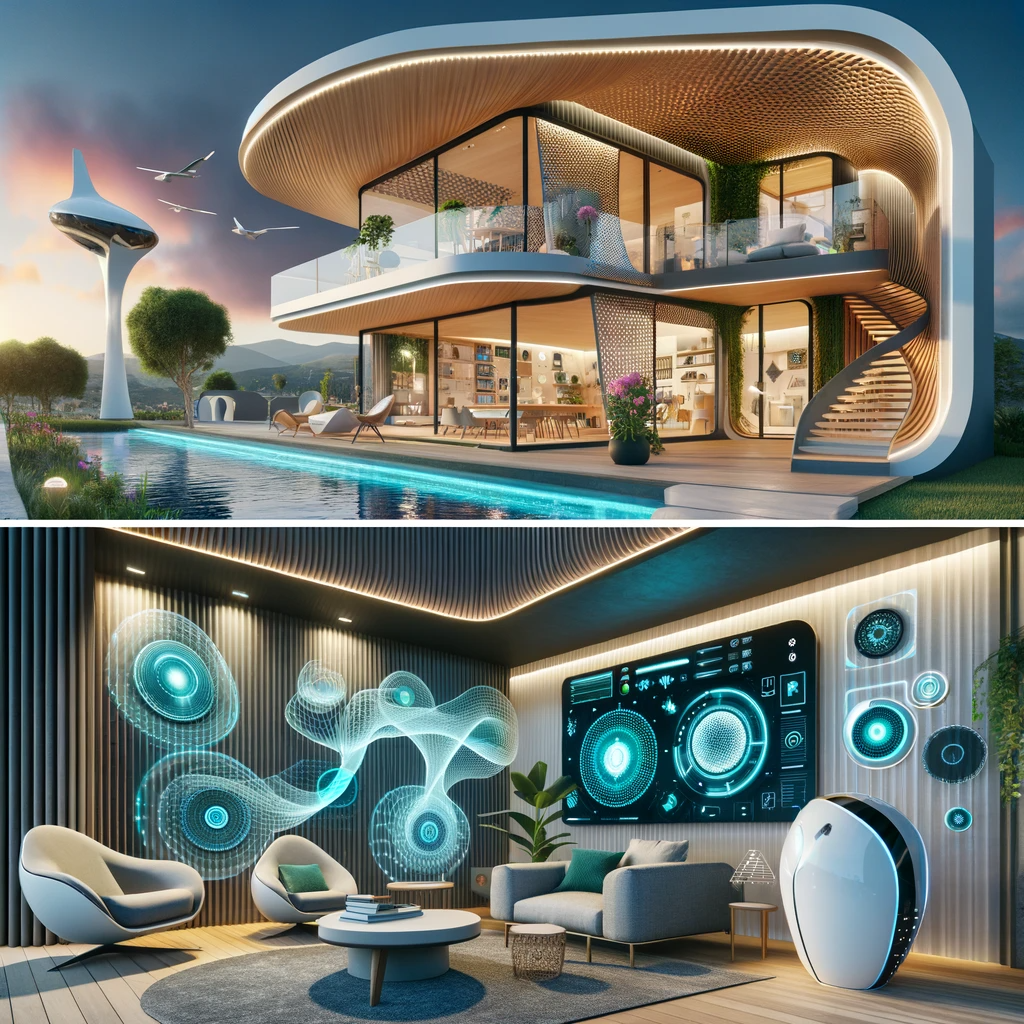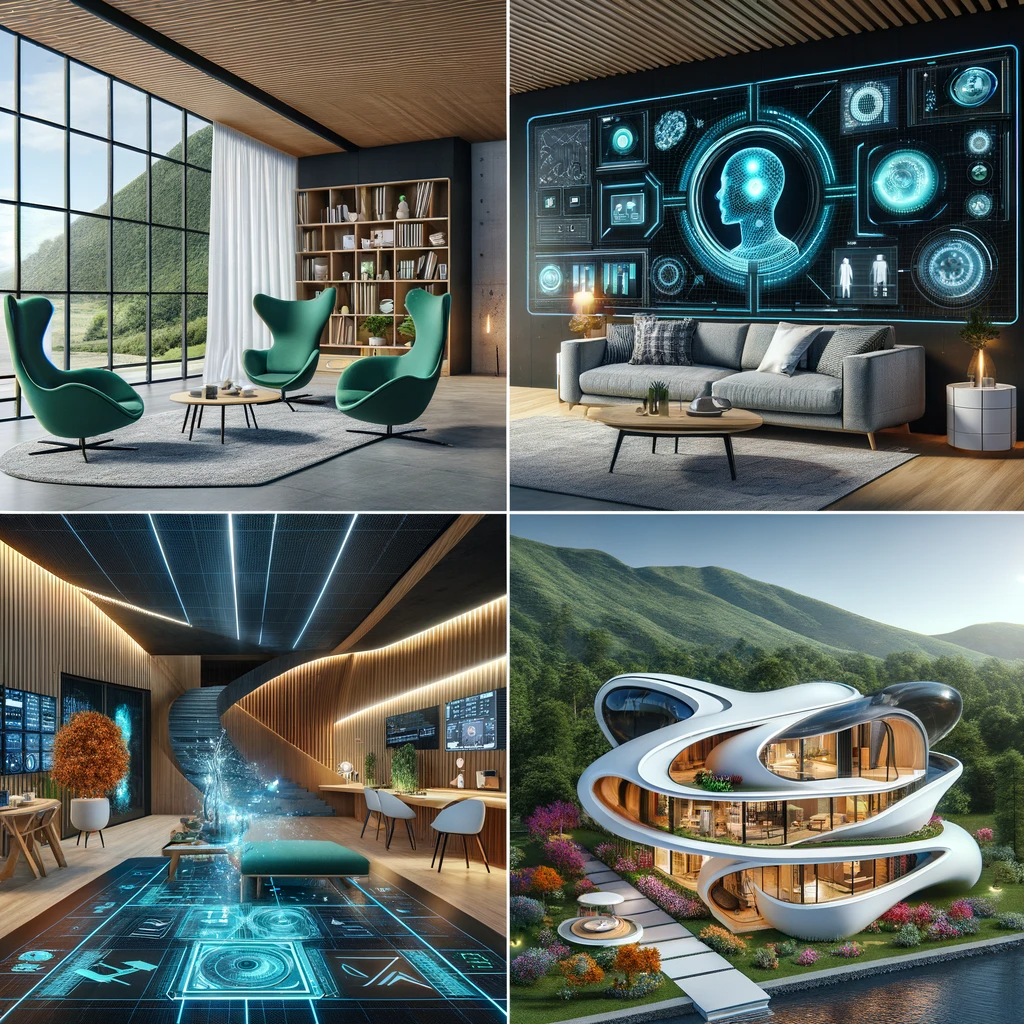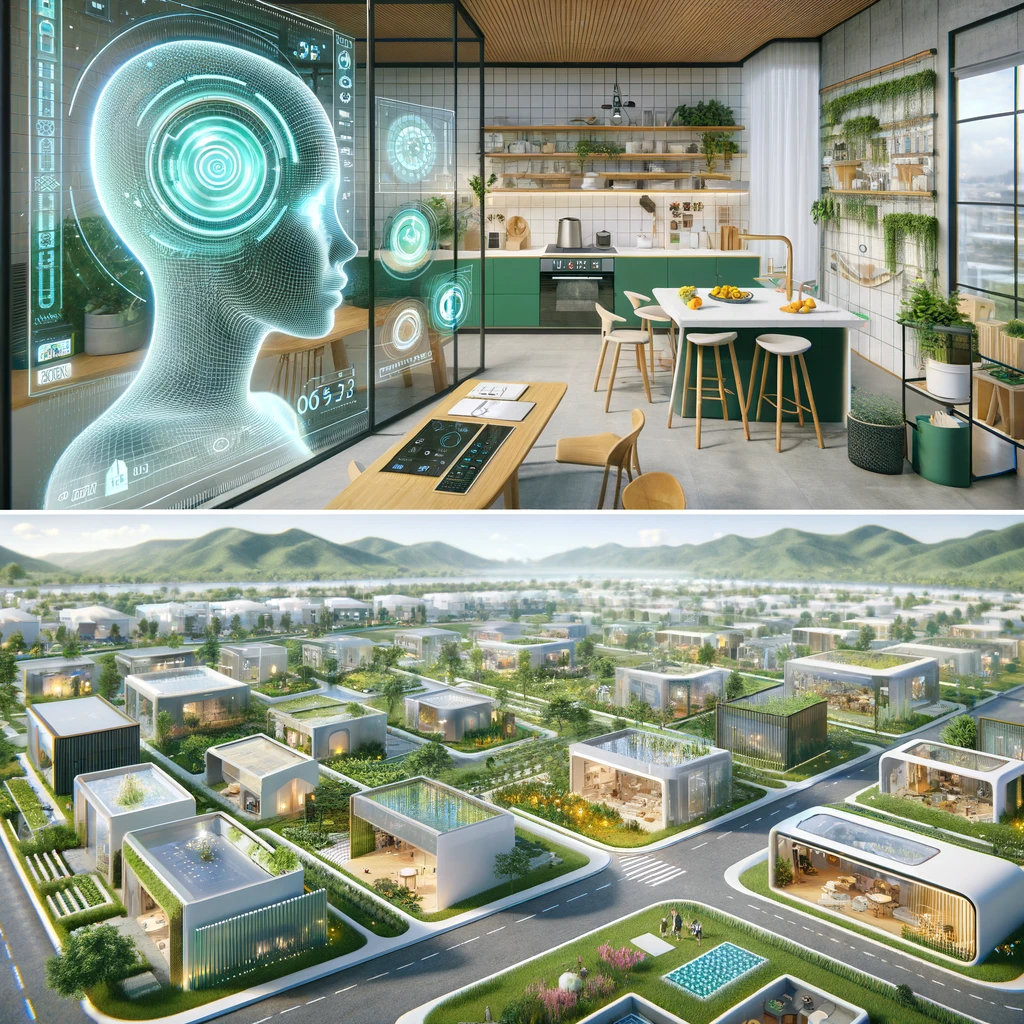In an era where technology intertwines with every aspect of our lives, Artificial Intelligence (AI) emerges as a pivotal force, shaping industries from healthcare to entertainment. Now, this transformative technology is making its mark in the realm of architecture and home design, bringing forth a new era of customization and innovation. Gone are the days of one-size-fits-all designs; the future lies in spaces tailored to individual preferences, needs, and lifestyles, all made possible through the power of AI.
This article ventures into the fascinating world of AI-driven architecture and home design, exploring how these intelligent systems are not just augmenting but revolutionizing the way we conceive and create living spaces. From the intricate processes of layout planning to the nuanced art of interior decoration, AI tools are enabling a level of personalization and efficiency previously unattainable. We’ll delve into how architects and designers are leveraging AI to translate clients’ visions into tangible realities, pushing the boundaries of traditional design practices. However, as we navigate this promising landscape, we also confront the challenges and ethical considerations that accompany AI’s integration into creative domains. Join us in uncovering the potential of AI in crafting the homes of tomorrow – spaces that resonate with individuality, infused with the intelligence of the digital age.
The Evolution of AI in Architecture
Architecture, an ancient art form, has continually evolved, embracing changes brought about by technological advancements. The journey from drafting tables to computer-aided design (CAD) software marked a significant shift in how architects create and visualize structures. Today, the incorporation of Artificial Intelligence (AI) heralds a new chapter in this evolution, one where the boundaries of innovation are continually expanding.
The use of AI in architecture goes beyond mere digitalization; it involves leveraging machine learning, neural networks, and advanced algorithms to optimize design processes, enhance creativity, and improve decision-making. AI tools can process vast amounts of data, including site conditions, material properties, and historical design trends, enabling architects to create more informed and innovative designs. This section will explore the various AI technologies currently in use, providing a glimpse into how they are transforming architectural practices from the conceptual stage to the final design.
Additionally, the impact of AI on architectural education and professional training will be discussed, highlighting how emerging professionals are being equipped to work alongside these advanced technologies. By understanding the evolution of AI in architecture, we gain insight into how this technology is reshaping the foundations of design and construction.

AI in Personalized Layout Planning
The heart of a home lies in its layout – a blueprint that dictates functionality, flow, and aesthetics. AI is revolutionizing this aspect of home design by offering personalized, efficient, and innovative layout planning solutions. AI algorithms now have the capability to analyze a client’s preferences, lifestyle needs, and spatial constraints to suggest layouts that are not only practical but also tailored to individual tastes.
This section delves into how AI assists in creating layouts that optimize space utilization, natural light, and energy efficiency. By processing parameters such as plot size, topography, and local climate, AI tools can propose designs that harmonize with the environment while catering to specific client requirements. The discussion will include real-world case studies where AI-assisted layout planning led to unique and satisfying design outcomes.
Moreover, the integration of virtual reality (VR) and augmented reality (AR) with AI provides clients with immersive experiences, allowing them to visualize and modify their future homes in real-time. This interactive process ensures that the final layout is a true reflection of the client’s vision, bridging the gap between imagination and reality.
AI in Interior Design and Decoration
Moving beyond the structural aspects of a home, AI’s influence extends to the realm of interior design and decoration. This section explores how AI is being used to personalize interior spaces, making style and functionality work in unison to create environments that resonate with the inhabitants’ personalities.
AI-driven tools in interior design assist in selecting color schemes, furniture placement, and lighting, considering factors such as room dimensions, natural light, and the client’s aesthetic preferences. These tools can suggest themes, materials, and textures, drawing from a vast database of design elements and trends. The use of AI in this field enables a more efficient design process, reducing the time and cost associated with traditional trial-and-error methods.
Examples of AI-driven interior design platforms and applications will be highlighted, showcasing how they are democratizing design by making professional advice accessible to a broader audience. The impact of these tools on the industry, both in terms of enhancing designer-client collaboration and streamlining the design process, will be discussed in detail.
In each of these sections, the narrative will not only emphasize the technological advancements AI brings to home design and architecture but also the creative synergy it fosters between architects, designers, and clients.
Challenges and Opportunities in AI-driven Home Design
While AI’s integration into home design and architecture heralds many exciting possibilities, it is not without its challenges. This section addresses the hurdles and opportunities presented by AI in this field, providing a balanced view of its impact on the industry.
One of the primary challenges lies in the realm of data privacy and security. As AI systems rely heavily on client data to customize designs, safeguarding this sensitive information is paramount. The section will explore the measures architects and designers must take to protect client data, alongside the ethical considerations of using AI in design processes.
Another challenge is maintaining the creative essence of architecture and design. There is a concern that over-reliance on AI could lead to a loss of the human touch that is intrinsic to creative processes. This section will discuss how professionals can strike a balance between leveraging AI for efficiency and innovation while preserving the unique artistic elements that define their work.
On the flip side, AI offers vast opportunities for sustainable and eco-friendly designs. By analyzing environmental data, AI can help create buildings that are more energy-efficient, have lower carbon footprints, and are in harmony with their surroundings. The future of AI in architecture also points to more inclusive and accessible design solutions, catering to a diverse range of needs and preferences.
The section will conclude by looking at the potential advancements in AI that could further revolutionize home design and architecture. This includes the development of more intuitive AI systems that can better understand and interpret human emotions and preferences, leading to even more personalized and responsive designs.

Conclusion
The exploration into AI’s role in customized home design and architecture reveals a future where technology and creativity converge to create spaces that are deeply personal, functional, and sustainable. AI offers a new toolkit for architects and designers, one that enhances their ability to respond to individual needs and environmental challenges. However, as we embrace these technological advancements, the importance of addressing ethical considerations and maintaining the human element in design remains paramount.
As AI continues to evolve, it promises to further democratize design, making personalized and innovative architectural solutions accessible to a wider audience. The journey ahead for AI in home design and architecture is one of discovery, creativity, and balancing technological possibilities with human values. This new era of AI-driven design is not just about buildings and interiors; it’s about crafting spaces that reflect the unique identity and aspirations of those who inhabit them, marking a significant shift in how we think about and create our living environments.
